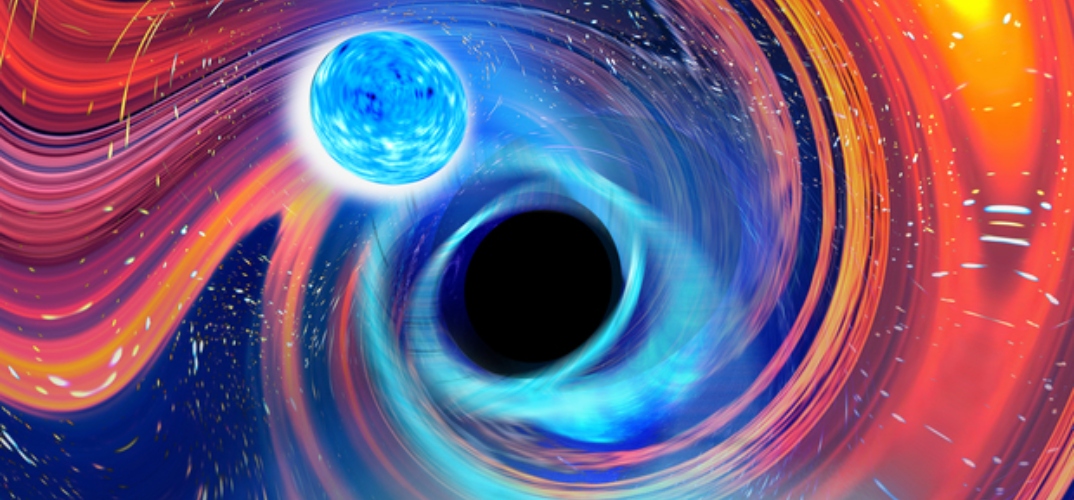Scientists are now a step closer to understanding the origins of heavy elements in our Galaxy

University of Hertfordshire researchers have had a breakthrough in understanding why our Galaxy is so enriched with heavy elements such as europium, gold, and uranium, and where they originally came from.
Scientists have known for a while now that these elements can be found not only on Earth but also across our solar system, our Galaxy and the wider universe – but exactly how they came into being is still an unsolved astronomical mystery.
However in a new paper published in The Astrophysical Journal Letters this week, researchers – led by Chiaki Kobayashi, Professor of Astrophysics at the University of Hertfordshire and a Leverhulme Research Fellow – have disproved one common theory about the origin of elements, taking astrophysicists a step closer to the truth.
Professor Kobayashi’s team challenged the theory that these elements are created during the merger of two compact objects that are formed at the end of the life of massive stars, more than ten times heavier than our Sun. Specifically, the theory formulates that the merging of two neutron stars – or one neutron star and one black hole – could produce heavy elements and be responsible for the abundance of them that we see in our Milky Way.
Professor Kobayashi and her large, international team studied the process of these mergers, which can only occur in rare circumstances where two massive stars existed very close to each other, known as a binary system. However, the results proved that these merger events alone cannot be responsible for the presence of gold and other heavy elements.
Professor Kobayashi, who has dedicated her research to understanding the origin of elements and previously discovered evidence of a new type of cosmic explosion in our galaxy’s earliest stars., explained:
“There is a relatively high abundance of gold in our Galaxy, something we know was the case early in its life and well before the creation of our solar system.”
“However, we found that prior to compact objects such as neutron stars merging, there is often a significant delay, spanning the time it takes for the binary system to evolve to the merger itself. The physics of binary evolution is not very well understood – so I assembled an international team of experts to explore the possibilities.
“The creation of heavy elements in mergers between a neutron star and a black hole was also a potential explanation, but we found that they do not eject elements easily, unless the black hole is rotating unexpectedly fast.
“The outcome of our research is that we no longer believe neutron star mergers alone can be the cause of such richness of gold and similar elements in our Galaxy.”
Although Professor Kobayashi’s findings disprove one possible theory, they support another likely possibility suggested in her previous research.
“My theory is that instead of a merging of two stars, the origin of heavy elements is more likely due to the explosion of individual massive stars”, Professor Kobayashi continues. “These spin very fast and have strong magnetic fields, and are expected to explode as rare supernovae known as magneto-rotational supernovae or hypernovae – quickly generating elements such as gold as they do so”.
“The abundance of gold in our Galaxy in the past suggests that there must have been a source that created the elements more quickly: single stars may have started producing heavy elements even as far as back as shortly after the Big Bang. Even if only a small fraction of single stars became the rare type of supernovae, that could well explain the presence of gold and other elements in the early days of the Milky Way”.
Professor Kobayashi now intends to continue researching this phenomenon by comparing her theoretical predictions made on supercomputers, to observational data of multi-messenger astronomy – from spectroscopy of nearby stars to electromagnetic and gravitational wave signals of supernovae across the universe.
The full paper Can Neutron Star Mergers Alone Explain the r-process Enrichment of the Milky Way?, is published now in The Astrophysical Journal Letters and is available to read here. Visit the University of Hertfordshire website for more information about our astrophysics research.
Image: Artwork of a neutron star–black hole merger. Credit: Carl Knox, OzGrav - ARC Centre of Excellence for Gravitational Wave Discovery.